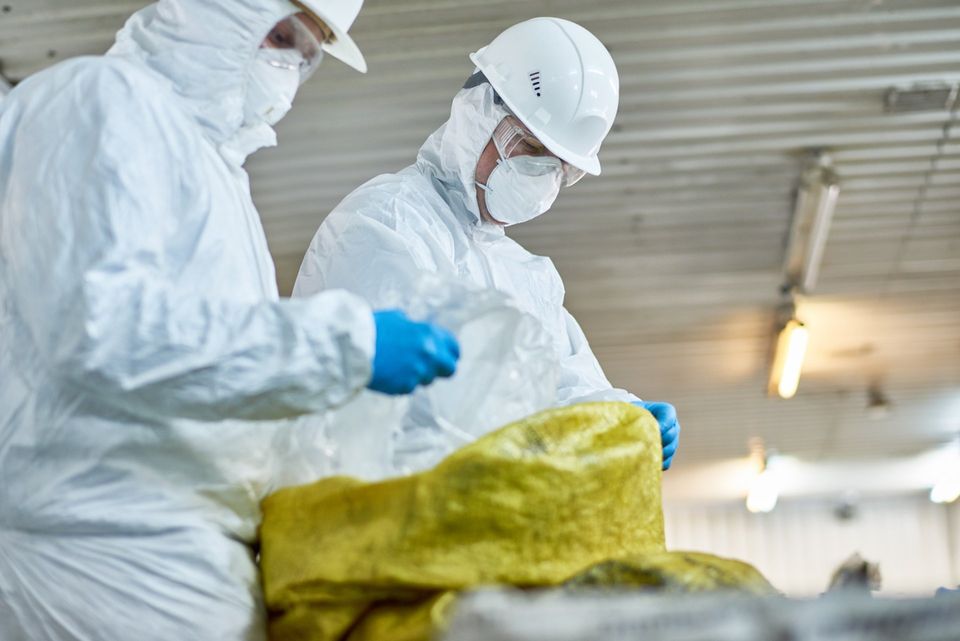Hazardous Materials Lab Packing Services

THE PROBLEM
Do you manage a warehouse, laboratory, hospital, school, medical facility, factory, or operation that uses small containers (usually less than 10 gallons each) of chemicals including:
- Solvents
- Acids
- Bases
- Reagents
- Paints
- Thinners
- Dyes
- Inks
- Cleaners
- Strippers
- Pool Chemicals
- Dry cleaning compounds
- Or other hazardous chemicals
Over time, you will find that bottles, jars, cans and various containers have accumulated that are out-of-date, contaminated, partially used, leaking, or simply no longer needed.
DANGEROUS HAZARDOUS CHEMICALS
Some chemicals, like picric acid (commonly used in medical and public schools chemistry laboratories) become explosive as they age, and can explode just from the friction of opening the lid. Other chemicals, like solvents such as Acetone, Methyl Ethyl Ketone, Xylene, Ether and Toluene are extremely flammable and create a potential fire hazard while in storage.
Additionally these chemicals may become hazardous wastes after you have used them. Chromic acid-cleaning solutions, used or unused, aerosol cans of paint, cleaners and degreasers may also be classified as hazardous wastes and must be disposed of properly.
Lab decommissioning is one of the most complicated waste disposal operations because it is regulated by several agencies including the Department of Transportation, EPA and Occupational Safety and Health Administration.
THE SOLUTION
SEA’s specialists are familiar with the proper methods of decommissioning laboratories, know the regulations and the chemistry necessary to safely, and efficiently dispose of all hazardous chemicals. SEA’s lab packing services includes:
- Chemical Categorization
- Packing under EPA, OSHA, and DOT regulatory guidelines
- Over-packing leaking or damaged containers
- Complete paperwork, manifests, inventories, MSDS, Labels, and shipping papers
- Transportation and Disposal Services
QUALIFIED PERSONNEL & CHEMIST ON-STAFF
SEA personnel are 40-hour HAZWOPER and HAZMAT Technician level certified before working on any Environmental or Lab Packing projects. SEA personnel ride themselves on their safety and health record, customer satisfaction, and care for the environment.
EXPERIENCED TEAM
In the calendar year 2000-2006, SEA safely and successfully completed over 3500 lab-packing projects for general industry, construction and government agencies.
SEA’s experienced team of lab pack specialists is the reason SEA is the most reliable, respectable and largest lab packing service firm in this region.

f you think PFAS regulation is someone else’s problem, think again. The regulatory environment around per- and polyfluoroalkyl substances is shifting rapidly, and safety, environmental, and operations teams are squarely in the crosshairs. Rather than scrambling when the deadlines arrive, your best strategy is to act early.

Halloween might be the season for ghost stories and haunted houses, but for safety and environmental professionals, the real nightmares happen at work. From unseen hazards to data disasters, these frights are all too real. At SEA, we help EHS managers conquer their fears — and their risks — with smart, proactive solutions that turn horror stories into success stories.

Every year, OSHA releases its list of the most frequently cited workplace safety standards. While the names change little from year to year, the numbers tell a story: employers continue to struggle with the same hazards—falls, hazardous chemicals, and machine safety. Understanding these violations is the first step in preventing costly citations and protecting workers.
